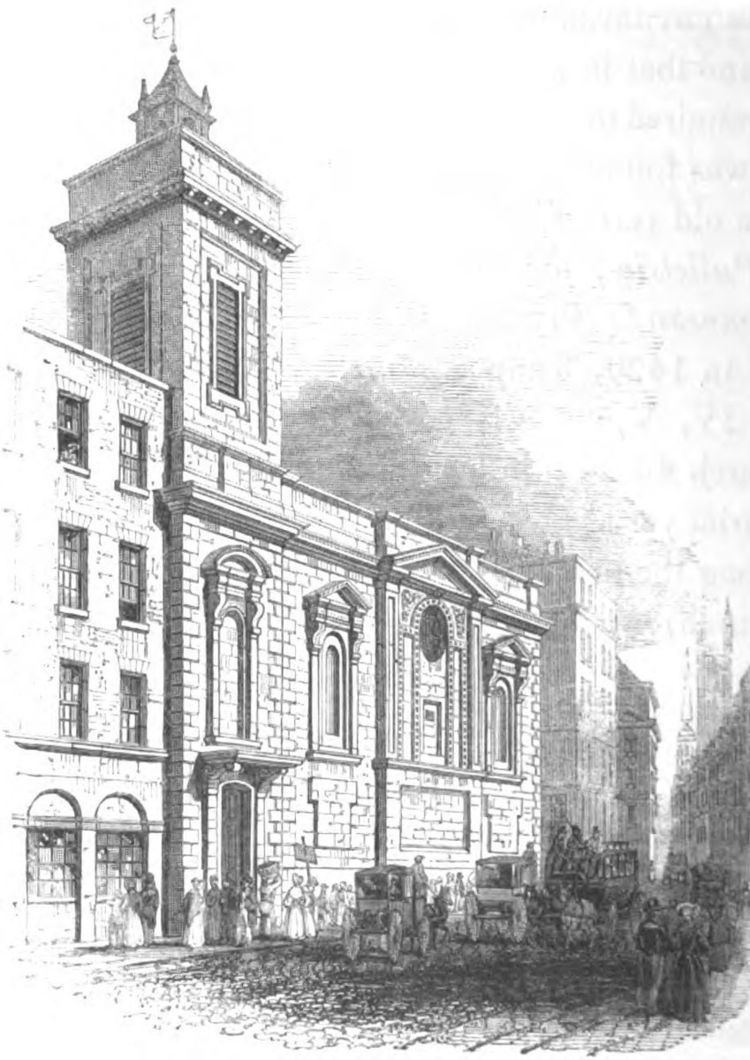Country United Kingdom Architect Christopher Wren | Denomination Church of England | |
 | ||
Similar St Mildred - Bread Street, St Mary Colechurch, St Matthew Friday Street, St Mary Magdalen Old Fish, St Martin Pomary | ||
St Mildred, Poultry was a parish church in the Cheap ward, of the City of London. It was rebuilt after the Great Fire of London and demolished in 1872. St Mildred in the Poultry was the burial place of the writer Thomas Tusser. Some description of the church and its monuments is given in John Stow's Survey of London.
Contents
Medieval building
The church stood the north side of Poultry at its junction with Mansion House Street. The first church can be traced back to 1175, in the reign of Henry the Second; by 1456, it had fallen into disrepair, and had to be taken down and rebuilt.
Rebuilding after the Great Fire
The medieval building was destroyed in the Great Fire of London in 1666, and a new church was completed in 1676 to the designs of Sir Christopher Wren, after which the parish was united with that of St Mary Colechurch, which was not rebuilt. George Godwin described the interior of the new church as "a simple room with a flat ceiling coved at the sides … remarkable for nothing but a strange want of symmetry apparent at the west end". It was 56 feet long, 42 feet wide and 36 feet high. The most ornamented part of the exterior was the south side, towards Poultry, with a central pediment and Ionic pilasters. There was a 75 foot high tower, topped by a copper weather-vane in the form of a ship.
An organ was provided in the mid eighteenth century by George England.
Demolition
The building was sold for £50,200 in 1871 under the Union of Benefices Act and demolished the following year. A City Corporation Plaque now marks the site. The parish was united with that of St Olave Old Jewry and the proceeds of the sale were used to build and endow the new church of St Paul, Goswell Road, which also received the City church's pulpit and woodwork. The weather vane was transferred to St Olave Old Jewry. When the parish of St Olave also ceased to be viable, the combined parishes were in turn united with St Margaret Lothbury.
